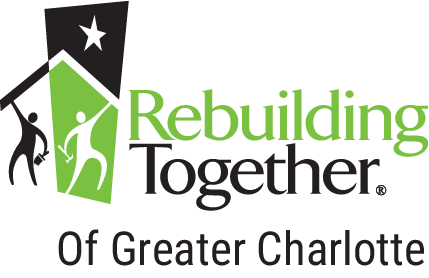Safe and Healthy Housing: Contaminant Free
A safe and healthy home is vital for overall health, which is why Rebuilding Together of Greater Charlotte’s Safe and Health Housing model is foundational for all the critical repair projects we do. The eight principles of a safe and healthy home are: clean, dry, safe, ventilated, maintained, thermally-controlled, pest-free, and contaminant-free.
No one wants to live in a contaminated environment. Everyone wants their home to be a clean, healthy place to spend their time. Unfortunately, sometimes the outside world will blow in contaminants when we open our doors, and at other times, the objects we choose to carry in will be a factor in the health of our homes.
Common Household Contaminants
Allergens and harmful chemicals are a few of the common household contaminants that pose a significant risk to our health and well-being. Understanding what these contaminants are and why managing them is crucial can help ensure a safe and healthy living environment for you and your loved ones.
What exactly are common household contaminants? They encompass a wide range of substances, including mold, dust mites, volatile organic compounds (VOCs), lead, radon, pesticides, and others. These contaminants can enter our homes through various means, such as poor ventilation, household products, building materials, and even our own activities.
Managing Harmful Contaminants
Managing these contaminants is essential for several reasons. First, they can have adverse effects on our health. Mold and dust mites, for instance, are naturally occurring in our environments, but are also common allergens that can exacerbate respiratory issues, like asthma and allergies. VOCs such as paint and insulation are often emitted from household products, like furniture and building materials. These compounds may cause headaches, nausea, and irritation of the eyes, nose, and throat. Lead exposure, particularly in older homes, can lead to serious health problems, especially in children.
Second, some household contaminants pose long-term health risks, including cancer and neurological disorders. Radon, a naturally occurring radioactive gas, is the second leading cause of lung cancer in the United States, and neighborhoods in the Greater Charlotte area have been identified as containing this contaminant. Pesticides, if not used and stored properly, can also have detrimental effects on both human health and the environment.
Preventing these contaminants in our homes is equally important. Fortunately, there are several simple steps you can take to minimize exposure. Regular cleaning and maintenance, proper ventilation, and using eco-friendly household products are effective ways to reduce indoor air pollutants. Additionally, ensuring proper sealing of windows and doors, as well as testing for radon and lead in older homes, can help mitigate risks. All of these steps are part of the work that RTGC performs in our critical home repair and accessibility modification projects to ensure that our clients are living healthy and safe at home.
In conclusion, being mindful of common household contaminants and taking proactive measures to manage and prevent them is essential for maintaining a healthy and safe home environment. By understanding the potential risks associated with these contaminants and implementing preventive strategies, you can safeguard the well-being of yourself and your family for years to come. After all, there's no place like home – especially when it's a healthy one.

